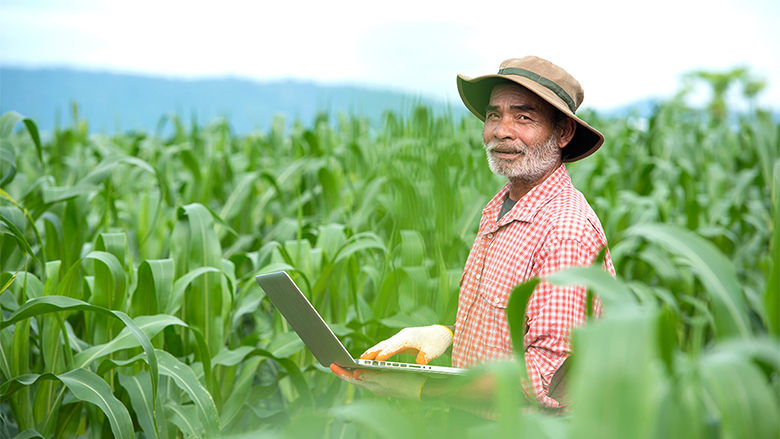The digital revolution has reached every part of the world, every aspect of society and commerce. The agriculture and food system is also ripe for a transformation.
What’s Cooking: Digital Transformation of the Agrifood System, a new report from the World Bank, explores how digital technologies are improving the food system, and provides a roadmap for countries to scale up their own digital agriculture, which is the use of digital technologies in the agriculture and food system. The report also provides a framework to evaluation policy proposals that can make the food system more efficient, equitable and environmentally sustainable.
Catch a replay of our event: Digital Agriculture: New Frontiers for the Food System |
|---|
Digital agriculture is helping to improve yields, cut food loss and waste, and help farmers receive fair pay for what they produce. This is because when farmers get the information they need in a timely manner, they can ensure food is sent to the right market and sold at a fair price. Digital technology and the near instantaneous sharing of knowledge it brings gives them that information, breaking through information asymmetries while lowering transaction costs.
“The digital revolution has enormous potential for transforming the agriculture and food system in ways not previously seen - by drastically lowering information asymmetries and transactions costs that plague the system, and, as a result, improving the lives of farmers, as well as the nearly 8 billion people who depend on them for food,” says the World Bank’s Kateryna Schroeder, Agriculture Economist and Task Team Lead.
During the recent COVID-19 crisis, weaknesses in the food system were made clear when empty shelves were seen in some stores while, at the same moment, surplus food had to be destroyed on farms. Digital technologies offer the chance to minimize such inefficiencies in the food system.
In 2014, an average of 190,000 data points were produced per farm, per day, and by 2050, experts have predicted that each farm will produce around 4.1 million data points daily. When farmers are able analyze this mass of information it is possible for them to adjust their planting and ensure what they grow has a market that will make it profitable.



